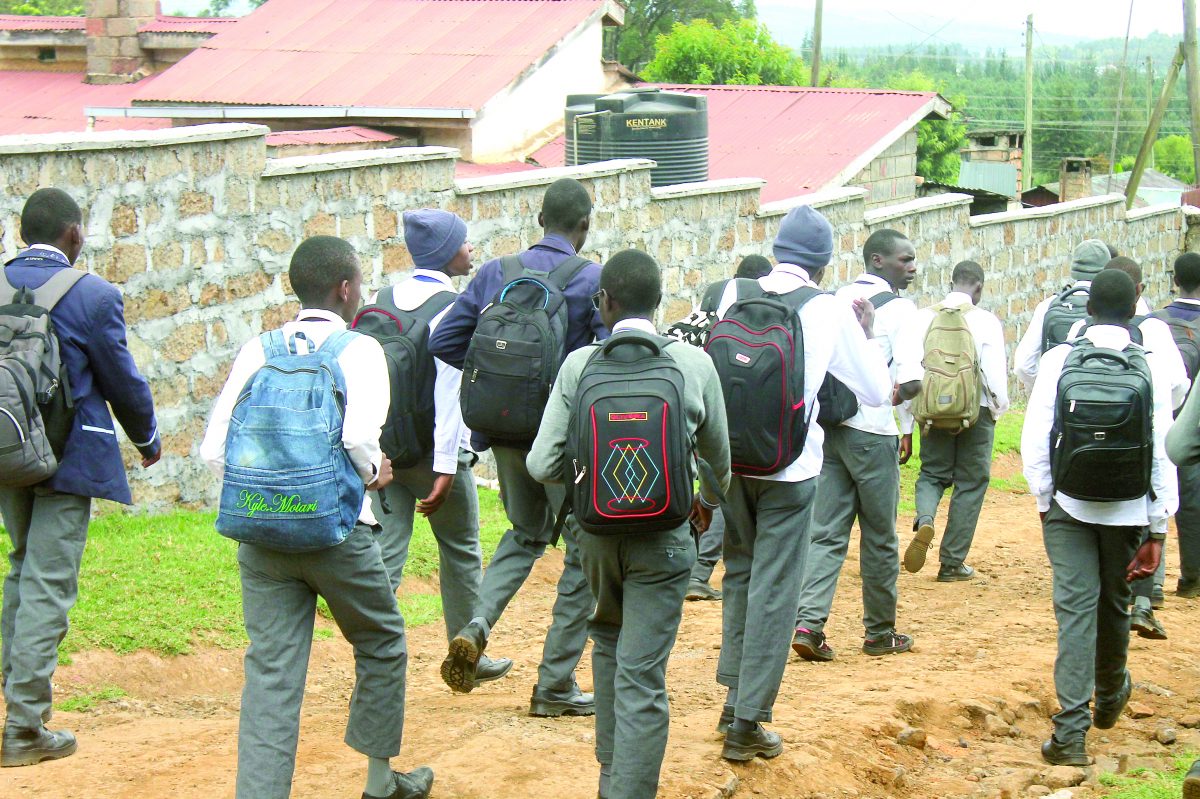State needs Sh22b for free education, says Machogu
By Irene.Githinji, November 2, 2023The government is facing a whopping Sh22 billion deficit to deliver free education to all learners in secondary schools, Education Cabinet Secretary Ezekiel Machogu confessed yesterday.
Machogu warned that the situation could get worse as the number of learners in secondary schools alone increases by over 240,000 next year.
In a meeting with members of the National Assembly Committee on Education, Machogu said the current secondary school population is 3.9 million learners against an available budget of Sh65 billion this financial year.
He said that this amount is below the approved Sh22,240 per learner, leaving a funding deficit of Sh22 billion.
“Next year, we project that the enrollment will be 4.2 million learners. If the funding remains as it is, the capitation will reduce to Sh15,476 per learner,” said the CS.
Machogu, who was accompanied by his Principal Secretary, Dr Belio Kipsang, made the remarks when he appeared before the MPs to respond to questions on capitation and other issues under his docket.
He added: “We must be able to address how we deal with the Sh22 billion that is underfunded. So until we are able to adequately deal with the question of underfunding so that we can take the capitation to 100 per cent of what is required then the challenge with capitation will persist.”
Belio said that discussions on funding, without dealing with the existing gap will continue to persist and that the problem of underfunding can only be solved by Parliament.
“Maybe progressively, we should be reducing the funding gaps so that within a certain period of time, we will have been able to close the gap that is there… but that is where the problem is,” he explained.
The CS said that over the last five years, the funds provided to the Ministry have fallen short of the approved rate leading to underfunding of the schools.
Lower capitations
“The Ministry is compelled to divide the available amount with the number of learners, which has been increasing every year. This results in capitations that are lower than the approved rate,” the CS explained.
For instance, in the 2022/2023 financial year, the approved budget was Sh64 billion at a rate of Sh22,244 against a requirement of Sh82 billion for 3.69 million learners, the CS revealed.
This was a Sh17.6 billion deficit resulting in 794,231 learners not being funded.
Similarly, Machogu said the Ministry retains an amount of capitation per learner for purposes of centralized services, which include textbooks, centralized management of co-curricular activities and EduAfya medical cover.
For Free Primary Education (FPE), the CS said that Sh3.6 billion was retained by the Ministry in the 2022/23 Financial Year, Sh10.8 billion under Free Secondary School Education (FDSE) and Sh3.3 billion under the Junior School.
Committee Chairman, Julius Melly however, led other MPS in putting the CS and PS to task to explain why the Ministry issues circulars indicating that schools receive Sh22,244 capitation yet they receive less.
“Why don’t you tell the schools that you are giving them the Sh16,000 so that everyone knows, including the parents that it is not Sh22,244?” posed Melly.
Extracurricular activities
Similarly, the MPs sought to know why the ministry still retains funds for extra curricular activities, given that the prescribed rate is only Sh70 per learner yet lawmakers were being saddled with requests from schools for support in such activities.
And for the number of students, Melly asked whether the ministry uses head count or from the National Education Management Information System (NEMIS).
Belio repsonded: “On the number of students enrolled in our schools and in NEMIS, we have both figures. We have the number of children in our schools but do not have birth certificates and we have the number of children who are fully registered meaning they have the certificates.”
The PS said that 3.6 million children are fully registered and around 380,000 others who do not have birth certificates but the Ministry has their details, which they have subsequently shared with Interior counterparts so that they can help in processing.
He said that the Ministry funds Kenyan students and can only confirm through some of these documentations as certificates noting that the projected biometric system will address these problem.
“The use of birth certificates is designed to avoid the risk of fictitious learners, which may lead to over capitation in school,” Machogu further explained.
The CS said the key challenge on NEMIS is low capacity among school principals on the utilization of the platform and during disbursement of FDSE, most principals delegate the function to update information on the portal to individuals and do not verify the data entered on their behalf.
But the MPS insisted that failure to release all funds is causing serious strains on schools, which are subsequently forced to seek assistance from parents by asking for some levy for the institutions to keep running.
“Overtime there has been underfunding in certain areas and what that means is that we start the year at 68 per cent. I would want to confirm that when we issue our circulars to schools on amounts of funds disbursed, we give the actual figures not the anticipated figures,” Kipsang explained.
On distribution of what is retained, the PS said the teaching and learning materials takes part of the money, including support of STEM at Sh200 per learner, remittance for textbooks at Kenya Institute of Curriculum Development (KICD), Sh1,350 for EduAfya and some from co-curricular, which is also underfunded.
